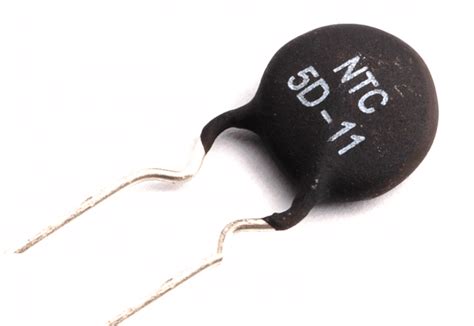A Comprehensive Guide to NTC: Understanding, Applications, and Benefits
1. Defining NTC
NTC stands for negative temperature coefficient. It refers to materials that exhibit a decrease in electrical resistance as their temperature increases. Conversely, materials with a positive temperature coefficient (PTC) increase in resistance with increasing temperature.
2. Applications of NTC
NTC thermistors, devices made from NTC materials, have wide-ranging applications in various industries:
-
Temperature Measurement: NTC thermistors are highly accurate and sensitive temperature sensors used in electronics, manufacturing, and research.
-
Temperature Compensation: They compensate for temperature variations in electronic circuits, ensuring stable performance and preventing overheating.
-
Circuit Protection: NTC thermistors limit current flow during power-up events, protecting sensitive components from damage.
-
Automotive Sensors: NTC thermistors are used in engine temperature sensors, airbag deployment systems, and other automotive applications.
-
Medical Devices: They are found in medical thermometers, incubators, and other temperature-sensitive medical equipment.
3. Understanding NTC Characteristics
NTC thermistors have distinct characteristics that determine their performance:

-
Resistance-Temperature Curve: NTC thermistors exhibit a non-linear relationship between resistance and temperature, with resistance decreasing exponentially with increasing temperature.
-
Sensitivity: They have high temperature sensitivity, enabling precise temperature measurements.
-
Interchangeability: NTC thermistors are interchangeable within a certain resistance range, reducing production variations.
-
Stability: They provide reliable and stable temperature sensing over a wide temperature range.
4. Common NTC Materials and Configurations
NTC thermistors are typically made from metal oxides, such as nickel-manganese-cobalt oxide (NiMnCo₂O₄) and nickel-copper-manganese oxide (NiCuMn₂O₄). They are available in various configurations, including:
-
Bead Thermistors: Small, bead-like components used for precise temperature measurement.
-
Disc Thermistors: Flat, disc-shaped thermistors suitable for surface mounting.
-
Chip Thermistors: Compact, chip-sized thermistors designed for high-volume applications.
5. Benefits of Using NTC Thermistors
Incorporating NTC thermistors into devices offers several advantages:
-
Accuracy and Precision: They provide highly accurate and precise temperature measurements over a wide range.
-
Reliability: NTC thermistors exhibit stable performance and long lifespan, ensuring consistent and reliable operation.
-
Cost-Effectiveness: They are relatively inexpensive, making them a cost-effective solution for temperature sensing applications.
-
Compact Size: Their small size and various configurations allow for easy integration into compact devices.
-
Versatile Applications: NTC thermistors cater to a wide range of industries and applications, from consumer electronics to industrial machinery.
6. Common Mistakes to Avoid
To ensure proper functioning and accuracy of NTC thermistors, it is essential to avoid common mistakes:
-
Overheating: Exceeding the specified operating temperature range can damage NTC thermistors.
-
Incorrect Installation: Improper mounting or wiring can lead to inaccurate readings or device failure.
-
Ignoring Thermal Effects: Considering only electrical properties without accounting for thermal effects can result in errors.
-
Using the Wrong Type: Selecting an NTC thermistor with inappropriate resistance, size, or configuration can affect performance.
7. Step-by-Step Approach to Using NTC Thermistors
Implementing NTC thermistors in a design requires a systematic approach:

-
Determine Temperature Range and Sensitivity: Define the temperature range of interest and the desired temperature sensitivity.
-
Choose NTC Material and Configuration: Select the appropriate NTC material and configuration based on required resistance, size, and accuracy.
-
Design Circuitry: Design an appropriate circuit to interface the NTC thermistor and interpret its resistance values.
-
Calibrate and Test: Calibrate the system to ensure accurate temperature readings across the operating range.
-
Monitor and Maintain: Regularly monitor the performance of the NTC thermistor and clean or replace it as needed.
8. Real-World Examples and Applications
NTC thermistors have widespread applications in real-world settings, demonstrating their versatility and effectiveness:
-
Automotive Temperature Monitoring: NTC thermistors monitor engine coolant temperature, enabling efficient engine operation and preventing overheating.
-
Battery Management Systems: They are used in battery packs to monitor cell temperature, prevent thermal runaway, and extend battery life.
-
Medical Diagnosis: NTC thermistors are incorporated into thermometers, incubators, and other medical equipment to ensure accurate temperature readings.
-
Consumer Electronics: They are found in smartphones, laptops, and other devices to protect against overheating and provide stable performance.
9. Key Statistics and Market Data
According to a recent study by Market Research Future, the global NTC thermistor market was valued at USD 1.3 billion in 2021 and is projected to reach USD 2.4 billion by 2030, exhibiting a CAGR of 7.2% during the forecast period.
10. Frequently Asked Questions (FAQs)
Q1: What is the difference between NTC and PTC thermistors?
A: NTC thermistors decrease in resistance with increasing temperature, while PTC thermistors increase in resistance with increasing temperature.
Q2: What is the typical resistance range of NTC thermistors?
A: NTC thermistors typically have resistance values ranging from a few ohms to several megaohms.
Q3: Are NTC thermistors interchangeable?
A: Yes, NTC thermistors within a certain resistance range are interchangeable, simplifying production and inventory management.
Q4: How can I protect NTC thermistors from overheating?
A: Use appropriate heat sinks or mounting techniques to ensure the thermistors operate within their specified temperature range.

Q5: What is the best way to calibrate NTC thermistors?
A: Immerse the thermistor in a temperature-controlled bath and measure its resistance at known temperatures to establish a calibration curve.
Q6: What are some common applications for NTC thermistors?
A: Temperature measurement, circuit protection, thermal compensation, and automotive sensors are common applications for NTC thermistors.
Additional Resources
Conclusion
NTC thermistors play a critical role in various industries, providing accurate and reliable temperature sensing solutions. Understanding their characteristics, applications, and best practices ensures optimal performance and extended device lifespan. By embracing the versatility and benefits of NTC thermistors, engineers and manufacturers can unlock new possibilities and enhance the efficiency and safety of electronic devices.
